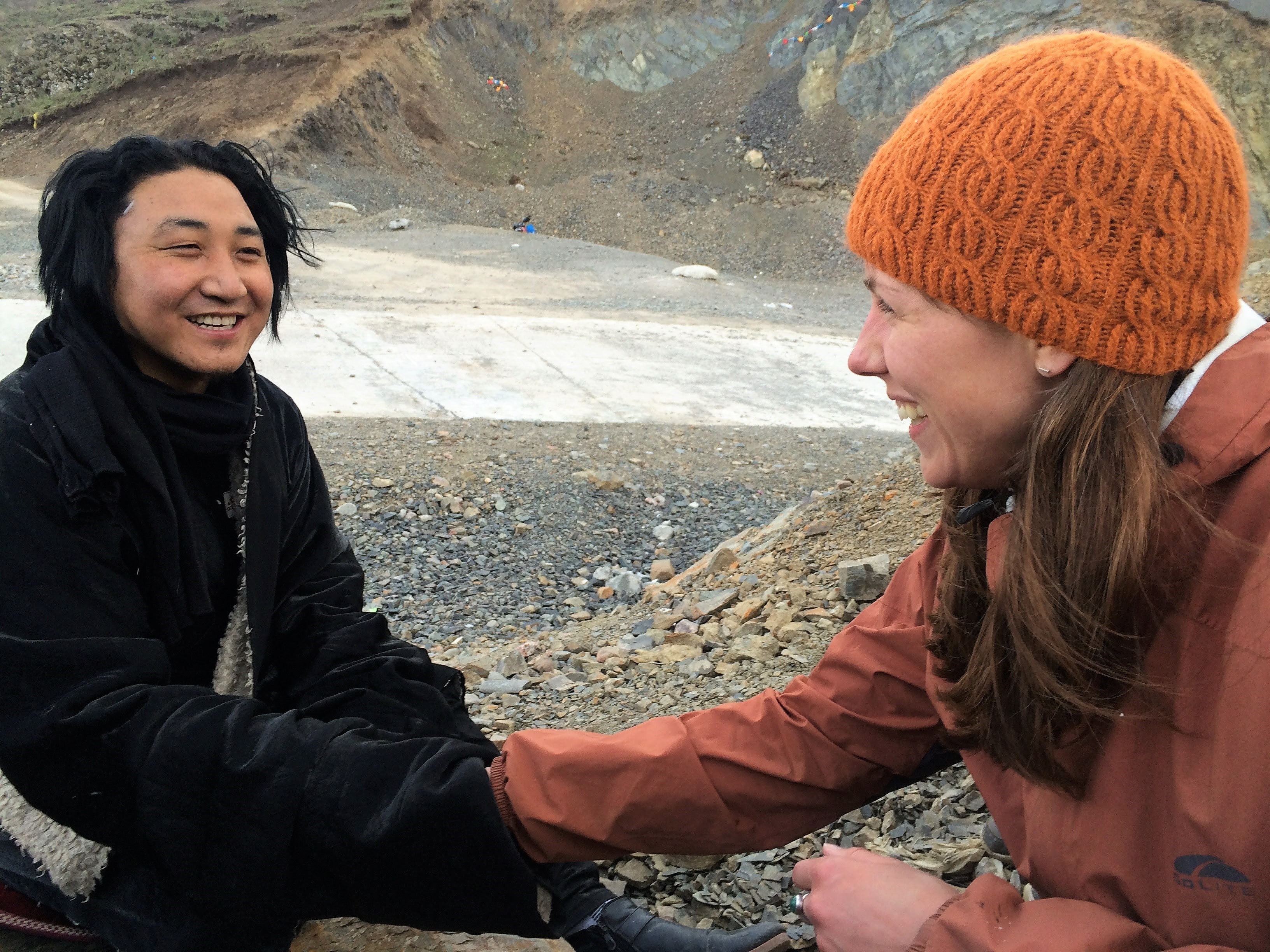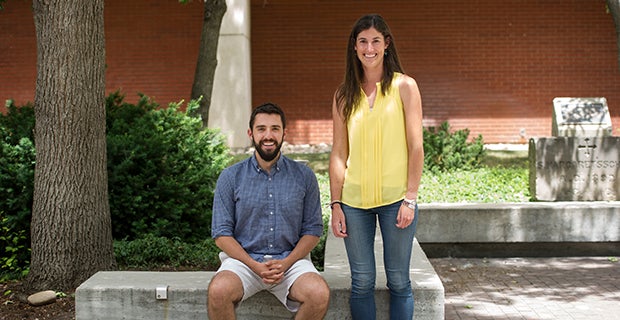Human-Environment Systems, an initiative in the College of Innovation and Design, opened its doors on campus in 2015 to aim an interdisciplinary focus on how humans affect the natural world and how, in turn, that world influences humans.
The group of scholars, graduate students and others from diverse disciplines want to understand and address issues of environmental sustainability.
“We’re defining ourselves as we grow,” said Neil Carter, an assistant professor in the initiative. “Having said that, a lot of thought has already gone into fleshing out our future.”
The initiative has a new strategic plan. It has active projects in the local area and across the world — working to increase lion populations at Gorongosa Park in Mozambique, studying the impacts of national-level policy on Himalayan forests. It’s hiring new faculty, and in the spring of 2018, hosted its first workshop — the initiative’s “coming out party,” said Jillana Finnegan, director of programs in the college. Scholars from across the region converged on Boise State to explore a most pressing issue: the social and ecological future of the American West.
A current signature HES project, for example, is studying the loss of natural habitats in Idaho due to urban growth.
“We might ask how we keep what we like — wilderness, open space — but at the same time, take care of a growing population that needs food and water,” Carter said.

The journal Science recently published Carter’s article, “The influence of human disturbance on wildlife nocturnality.” It looks at the ways animals around the world are changing their habits in response to human activities — and attracted widespread attention, including from the New York Times. The topic fits with HES’s mission and, while it stemmed from Carter’s tiger research in Nepal, resonates in the Treasure Valley.
“Boise, being the fastest growing city in the country, is the definition of human disturbance,” Carter said.
The region has a relatively intact ecosystem. This creates a unique laboratory to study the effects of human populations on native species such as elk, mountain lions and others that haven’t had to contend with people much in the past. At the same time, Idahoans have responded to the natural world in notable ways, he said. The state became home to the Central Idaho Dark Sky Reserve near the Sawtooth National Recreation Area in 2017 (with the help and leadership of a team of Boise State graduate students from the School of Public Service). It was the first reserve of its kind in the nation, recognizing the perils of light pollution.
Equipped to be ‘part of the conversation’
HES has a core group of six faculty members, but close to 20 additional faculty members from geosciences, public policy, computer science, physical sciences, anthropology and other fields, are involved in research through the initiative.
HES has goals, Carter said: asking the right questions, collecting data, and getting that data to the people who make decisions, including state and local lawmakers. This requires building relationships between the university and the community, and training the people who know how to do that.
“For example, if you’re interested in hydrology,” said Carter, “the traditional approach is to learn the physics of water movement. And that’s your expertise.”
The HES approach is different, broader. It involves knowing the science, but also being able to talk to stakeholders like farmers about how they make their decisions, how they get water to their crops, how they harvest, how they’ve had to adjust their practices over time.
“The person coming out of HES will be equipped to be part of that conversation. They will be ‘brokers’ between the issues and science,” said Carter.
Kelly Hopping, who has just finished her post-doctoral work at Stanford University, will join the HES faculty in the fall as an assistant professor. Her past research was in Tibet and Mongolia where she studied the effects of climate change and land use policies affecting peoples’ livelihoods. Those issues, she said, are as relevant in the Intermountain West.
“For me,” said Hopping, “the special thing about HES is that it’s specifically cultivating an interdisciplinary and collaborative approach to understanding human-environment systems. By contrast, it seems that ‘inter-disciplinarity’ in most places is achieved through many specialists doing things which, in aggregate, cross disciplinary boundaries. But in HES, it feels like there’s an expectation that we will approach most — or maybe all — issues interdisciplinarily, which I find really exciting.”
“HES,” she added, “is organized around the way the world really works.”

Students in the field, at home and abroad
In addition to the faculty, 12 graduate students and a small group of undergraduate students are working on projects through HES. Alex Killion, a Ph.D. student in ecology, evolution and behavior in the biology department, was the first graduate student to be part of the initiative. His graduate work will take place later this year in Idaho’s High Divide, a region that bridges Central Idaho and Greater Yellowstone. Killion will study how grizzly bears and other large carnivores move through the area, and how ranchers respond to them.
“We want to be able to inform policies that are going to reduce human and wildlife conflict and promote co-existence,” Killion said.
HES’s multi-discipline approach, so different from other programs where academic specialties exist in “silos,” was one of the lures of Boise State, he added.
Tara Easter will start in the Ph.D. program in ecology, evolution and behavior in the fall. Easter conducted research in wildlife ecology and conservation for her master’s degree, focusing on leopards at Gorongosa National Park in Mozambique. She will continue research in Africa, focusing on small carnivores like civets and bushy-tailed mongooses that populate areas outside the park and have not yet attracted the same kinds of research attention as larger carnivores. Like Killion, she treasures the cross-discipline richness HES offers.

“I come from wildlife conservation perspective, but it’s cool to be with people who are looking at the greater systems. When I have a question about how people are interacting with animals, I know social scientists I can talk to, and it’s encouraged.”
“What’s great about HES,” said Killion, “is that we have the freedom to dance between the traditional ecological piece and social science. Every year, we’re adding more people from across campus. It’s been exciting that every semester seems to offer more opportunities for collaboration.”
